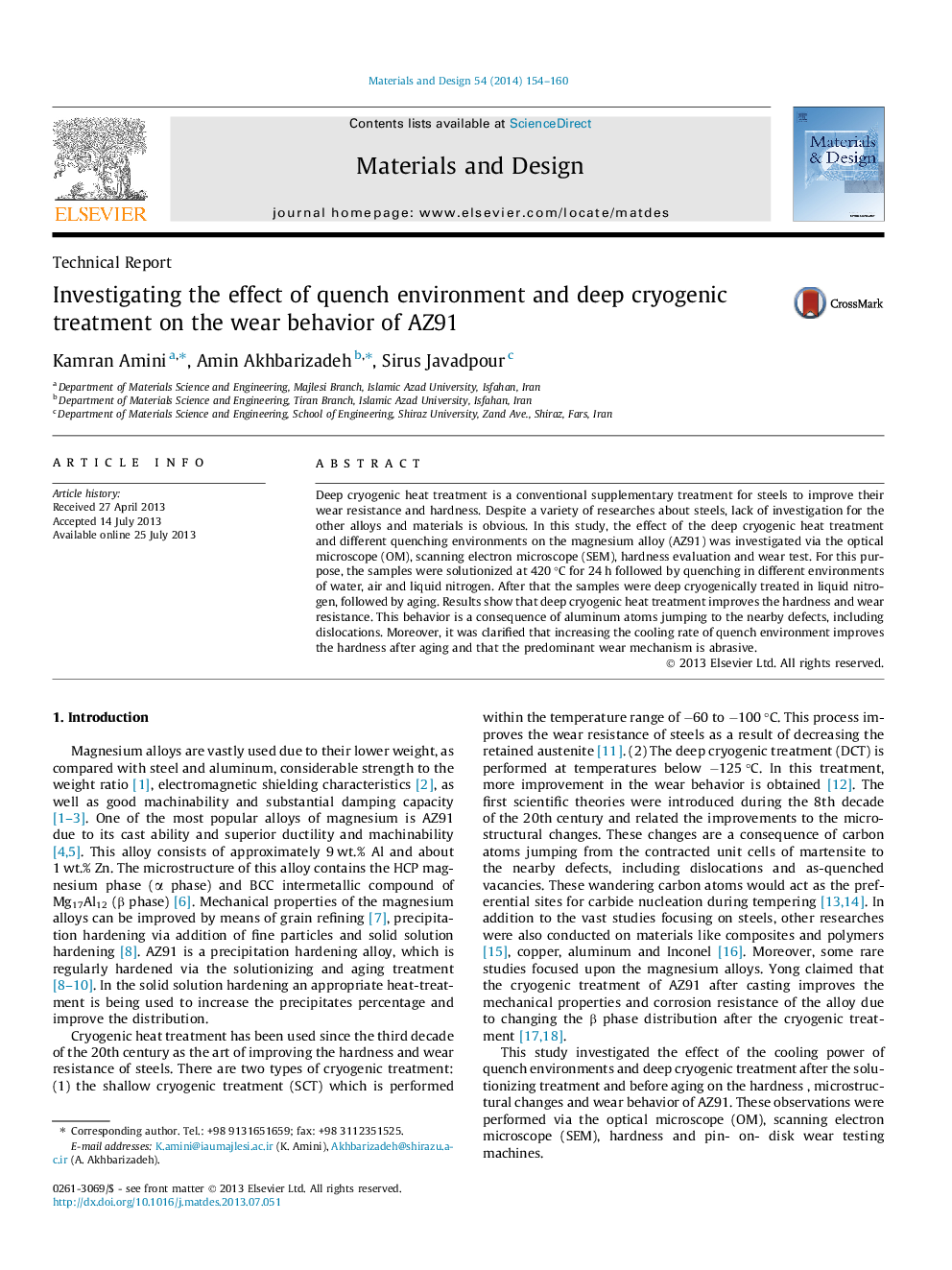| Article ID | Journal | Published Year | Pages | File Type |
|---|---|---|---|---|
| 829624 | Materials & Design (1980-2015) | 2014 | 7 Pages |
•Deep cryogenic treatment increases the hardness and war resistance.•Increasing he cooling rate of quench environment, improves the hardness and wear resistance.•Increasing the β precipitates, improve the hardness and wear behavior.•Predominate wear mechanism is abrasive.
Deep cryogenic heat treatment is a conventional supplementary treatment for steels to improve their wear resistance and hardness. Despite a variety of researches about steels, lack of investigation for the other alloys and materials is obvious. In this study, the effect of the deep cryogenic heat treatment and different quenching environments on the magnesium alloy (AZ91) was investigated via the optical microscope (OM), scanning electron microscope (SEM), hardness evaluation and wear test. For this purpose, the samples were solutionized at 420 °C for 24 h followed by quenching in different environments of water, air and liquid nitrogen. After that the samples were deep cryogenically treated in liquid nitrogen, followed by aging. Results show that deep cryogenic heat treatment improves the hardness and wear resistance. This behavior is a consequence of aluminum atoms jumping to the nearby defects, including dislocations. Moreover, it was clarified that increasing the cooling rate of quench environment improves the hardness after aging and that the predominant wear mechanism is abrasive.
